
A few days ago, we welcomed in the New Year with a freshly chilled glass of bubbly.
According to the personal financial social media company, WalletHub, Americans consume about 360 million glasses of sparkling wine on New Year’s Eve.
This iconic New Year’s Eve beverage is one of the most interesting and technical wines produced globally. Thus, for the start of 2021, I’m going to give you a little behind-the-scenes glance at traditional sparkling wine production method. As one of the most popular ways to produce sparkling wine, it is very likely you were sipping on a glass of bubbly produced in this way on New Years.
But First, What Does “Traditional Method” Mean?
There are several ways sparkling wine can get made, capturing the bubbles in the wine to make it effervescent. The term “traditional method” on a wine label is an indication of the process that created the carbonation in the wine. Traditional method sparkling wines get their carbonation from a second fermentation, which I will explain below, that takes place in the actual bottle you purchase.
You can find this indication on the bottle labels by looking for terms like:
- Traditional Method
- Méthode Traditionnelle
- Méthode Champenoise (for Champagne only)
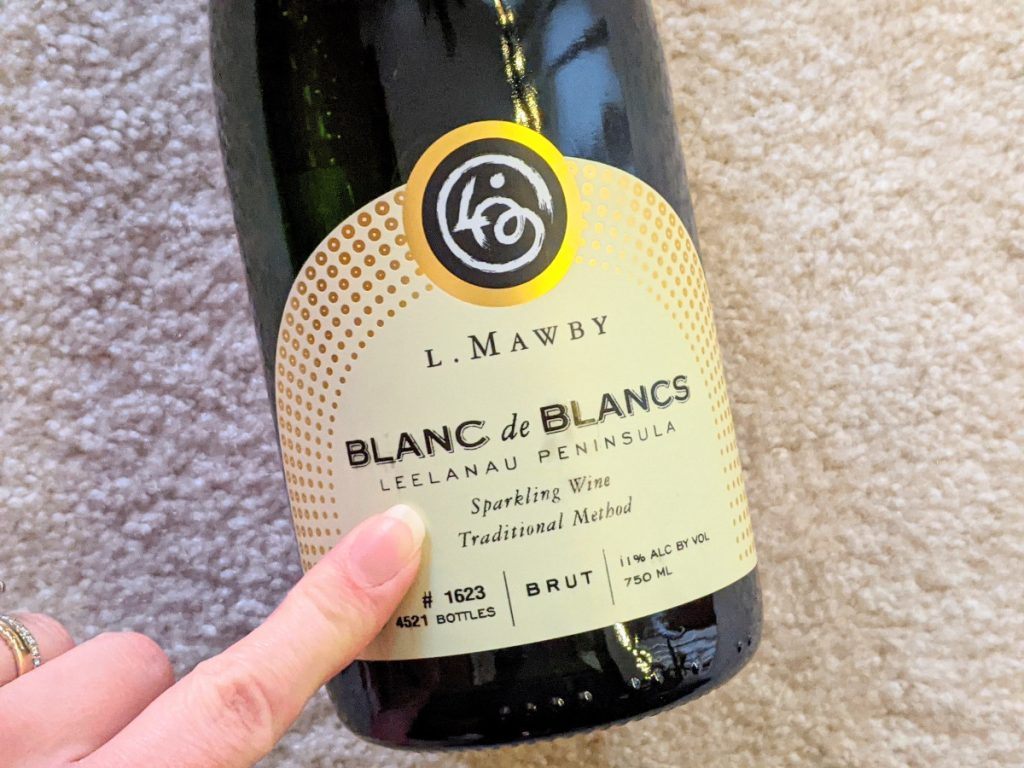
The term “Traditional Method” indicates that the second fermentation that created the bubbles took place inside this bottle.
L. Mawby (Mawby Vineyards & Winery) is a sparkling wine house that crafts delicious wines in Suttons Bay, Michigan
Photo by: Denise M. Gardner
The Traditional Sparkling Wine Method
Traditional method sparkling wines are made in the way that is outlined and used famously by the wine region of Champagne (France). A series of still (not carbonated) base wines are produced through fermentation in the same techniques associated with most still table wines. After fermentation is complete, various lots of wines are blended together to create the house blend. The house blend then goes onto a series of aging and stabilization processes, which are again, common with all wines.
It’s after these stabilization steps that the magic starts to happen.
The house blend wine and a sugar-yeast mixture are combined and bottled into special bottles that can withhold higher amounts of pressure. It is important to use the right bottles because the carbonation that develops will increase pressure inside the bottle.
The added sugar-yeast mixture is commonly referred to as the liqueur de tirage or tirage for short. The tirage creates a second fermentation while the house blend wine is stored in the bottle. The sugar provides substance for the yeast to use and support their growth. As with the initial fermentation, temperature plays a big role in ensuring the yeast can grow. Thus, these newly bottled wines are stored in appropriate temperature conditions to allow for an additional fermentation to progress.
Fermentation does more than convert the sugar into alcohol, although, there is additional alcohol generation during this step. In fact, the added sugar-yeast mixture will raise the alcohol level of the house blend wine about 1.5 – 2.0%. The fermentation reaction also generates carbon dioxide, the gaseous component that creates those fizzy bubbles in sparkling wine! The wine becomes saturated with carbon dioxide from this second fermentation in the bottle.
When the fermentation is complete, the dead yeast cells will settle to the base of the bottle, creating a visual residue. Before the bottle gets to your hands, it goes through the riddling process to remove the residue. The skilled individual that conducted the riddling process is known as the remuer. During the riddling process, the remuer slowly turns the bottles, which are held on a riddling rack. Bottles are initially held horizontally to allow all of the residual to collect. Over time, the remuer will conduct a series of small twists that also slowly invert the bottle, so that by the end of ridding, the bottles are held at an angle. This slow inversion not only keeps the residue collected, but ensures that it will all end up in the neck of the bottle near the cap.
Riddling is an essential production step in order to provide a clarified, residue-free sparkling wine to the consumer. But it’s also a time-consuming step. Today, some sparkling wine houses hold mechanized riddling racks that mimic the actions of the traditional riddling process. These mechanizations mimic the role of the remuer, but they are able to rotate several hundred bottles in a matter of seconds.
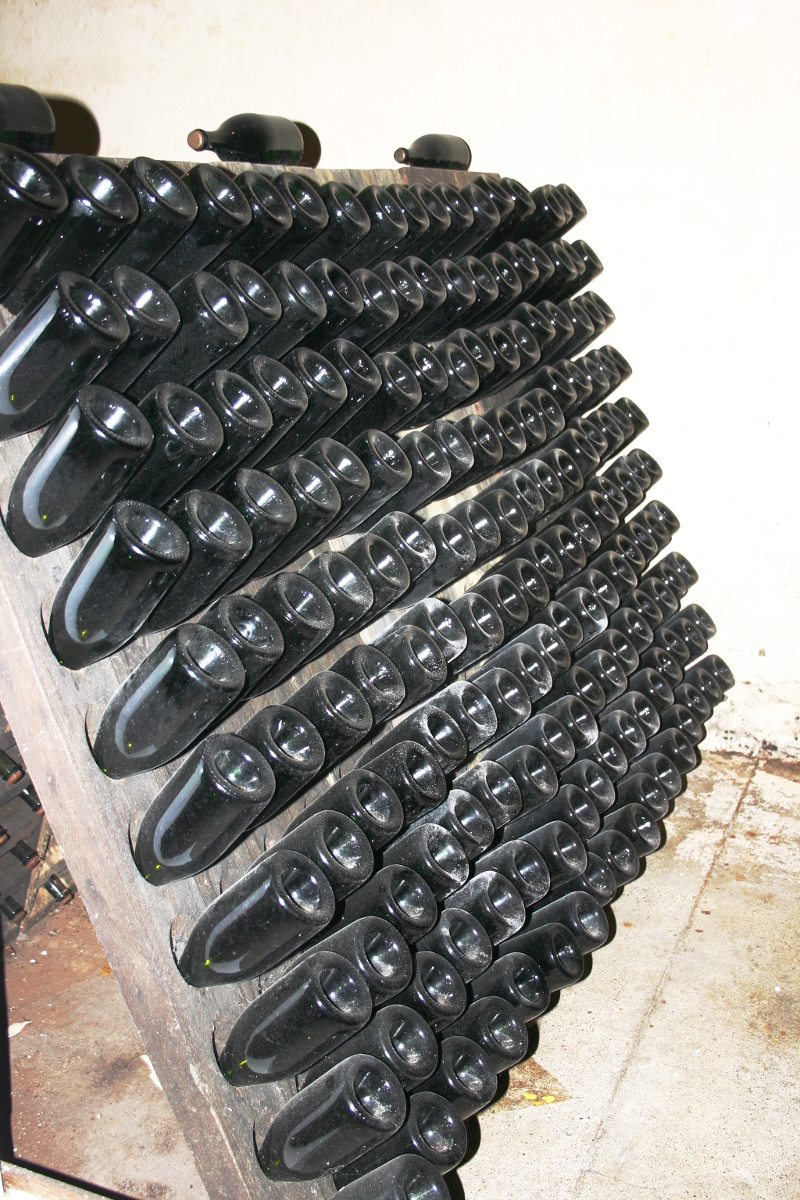
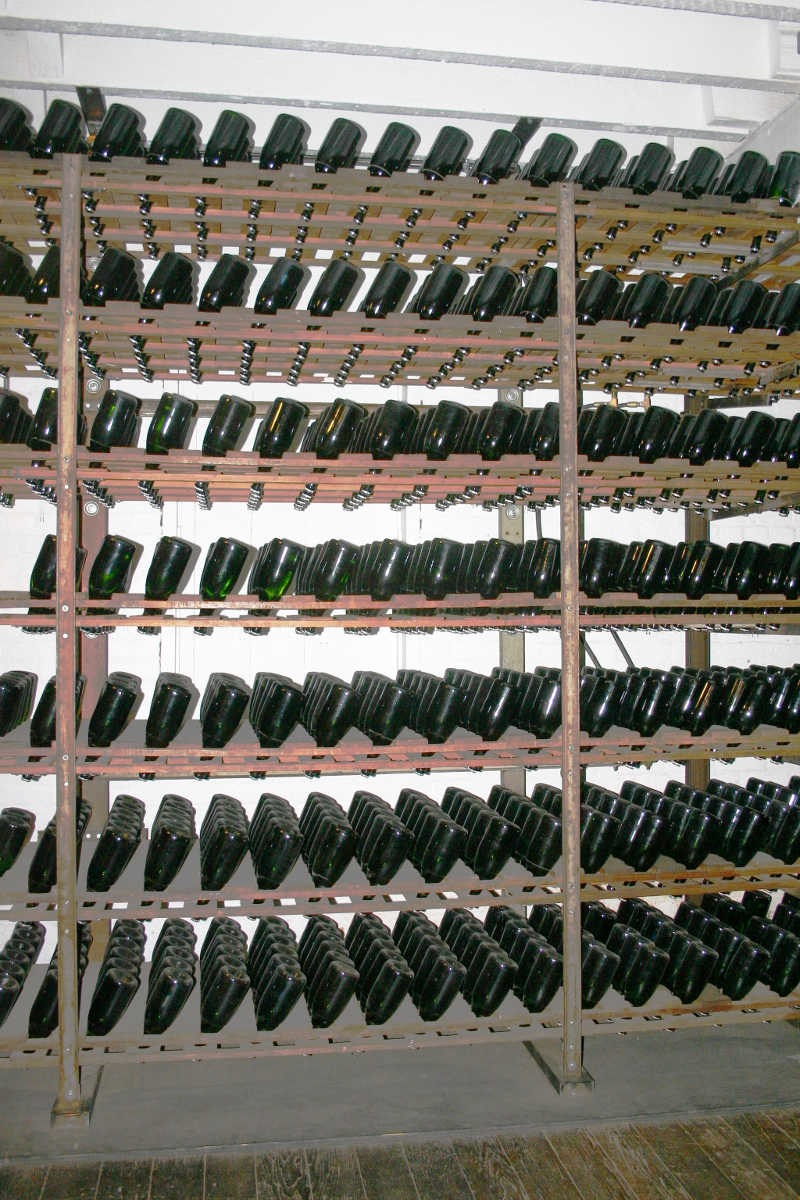
When the residue reaches the interior portion of the bottle cap, the wines move onto the disgorgement process. During disgorgement, the residue from within the bottle of sparkling wine is removed while minimizing wine volume loss from the bottle. The neck of the bottle is chilled to extremely low temperatures, which solidifies the residue and inhibits the sparkling wine in the bottle from gushing out like a miniature volcano. In a relatively quick process, the residue pops out, the dosage is added to the wine, and a traditional sparkling wine cork and crown seal the bottle. The liqueur d’expédition, which is more commonly known as the dosage, provides sugar to ensure a consistent sweetness from bottle to bottle produced. It can also contain wine acid and a few stabilizing agents to increase the wine’s longevity.
Just like that: Wala!
The bottle of sparkling wine is produced!
One of the most unique things about sparkling wine produced in the traditional method is the level of care that goes into each individual bottle. Do you have a sparkling wine? We would love to you to share your favorite sparkling wines on our Sip & Swirl Community Facebook Page!
Until next month, cheers!
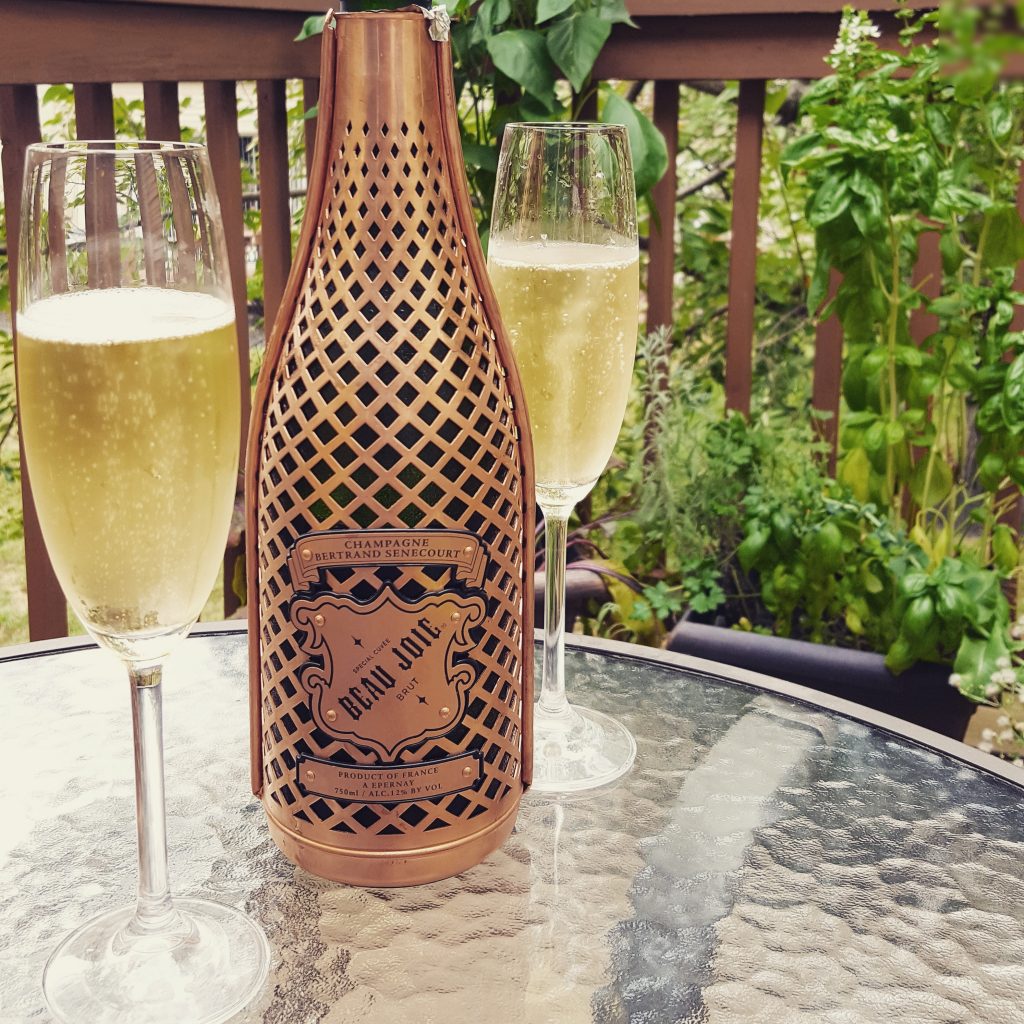
Your Bubbly Questions Answered!
What temperature should I chill sparkling wine to?
Sparkling wines should be served at 40°F – 45°F. The average home refrigerator is 40°F, which is on the chilly end for sparkling wine serving temperatures, but still appropriate.
Does sparkling wine last if we don’t drink the whole bottle?
Yes, but only for a day or two if it is a high quality sparkling wine and stored properly (see below!). After the bottle is opened, it is only a matter of time before the bubbles escape and the wine loses all of its carbonation.
How should I store an opened bottle of sparkling wine?
The best thing you can do is store the wine in the refrigerator. The cold refrigeration temperature will help retain the bubbles in the wine and minimize escape into the air.
Because the wine contains carbonation, any attempt to seal the bottle with a cork will result in the cork popping out during storage. Thus, I recommend using a layer of plastic wrap to place over the opening of the bottle. Seal with a rubber band, and then place the bottle in a refrigerator (not the freezer). While this method will not retain the bubbles indefinitely, there will likely be a few for a glass of bubbly the following day.
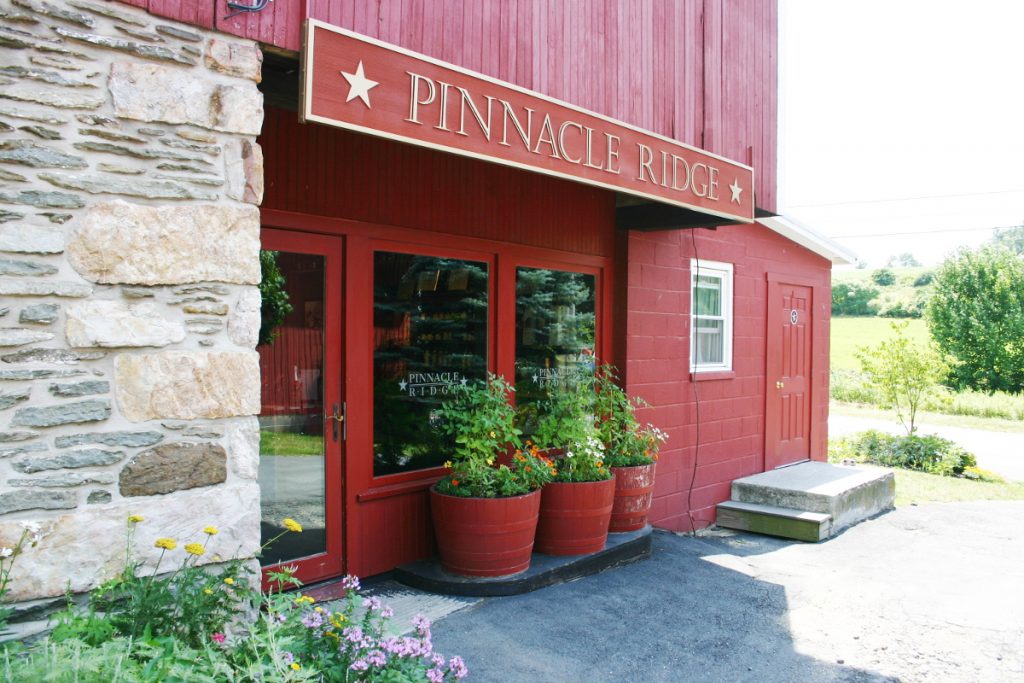
A New Hidden Wine Gem
Speaking of sparkling wine, I would love to highlight one of the first wineries in the state of Pennsylvania that specialized in traditional sparkling wine production, Pinnacle Ridge Winery. Located in the heart of where the Pennsylvania Dutch settled, the Pinnacle Ridge cellar and tasting room is decorated with hex sign agricultural art. You will find these unique designs sprinkled throughout agricultural properties in Southeastern Pennsylvania, capturing the history and tradition of this region. Pinnacle Ridge Winery also displays a different hex sign on each bottle of wine, making each label uniquely tied to its heritage. Paying homage to the stars that often appear on hex signs, the sweetness of each wine is immediately highlighted with a 4-star rating system. This immediately provides you with an indication whether the wine is dry and sweet or in between! Pinnacle Ridge produces 4 different sparkling wines, including a sparkling cider. But they also have a series of nice wines. Some of my favorite wines include the Dry Rosé and Dry Vidal. Vidal Blanc (pictured below) is a hybrid wine grape variety, which is often produced into a sweet wine. If you enjoy dry, aromatic white wines, then the dry version is real treat to sip. Another popular wine is Quaff, a medium-bodied red wine blend with a hint of sweetness. You can serve Quaff chilled and enjoy with a good slice of pizza, another local favorite!

Photos by: Denise M. Gardner

